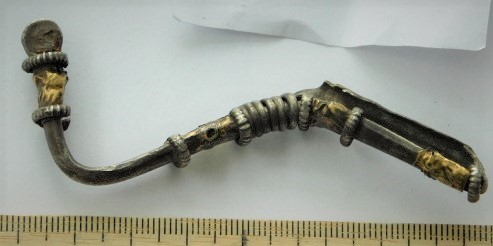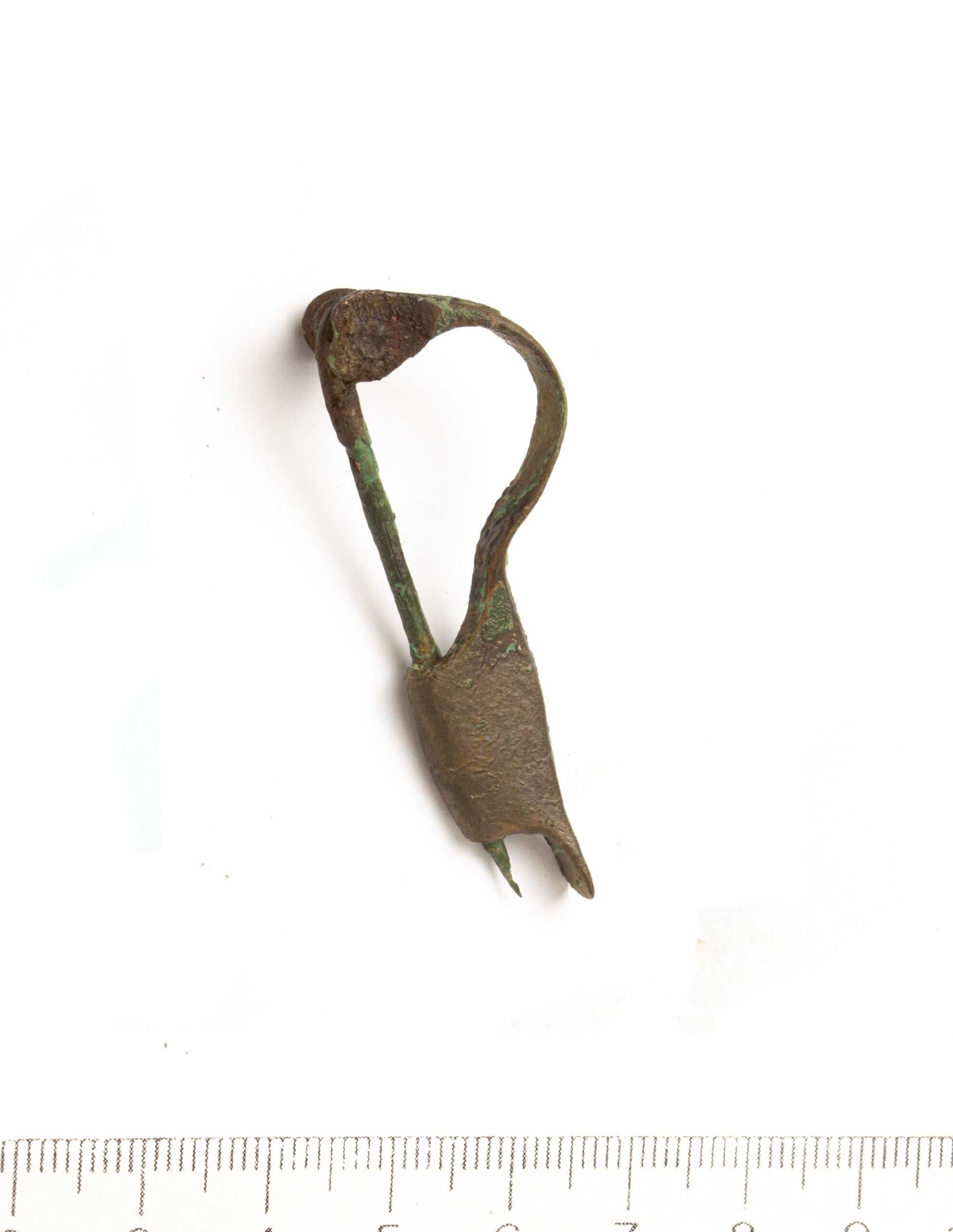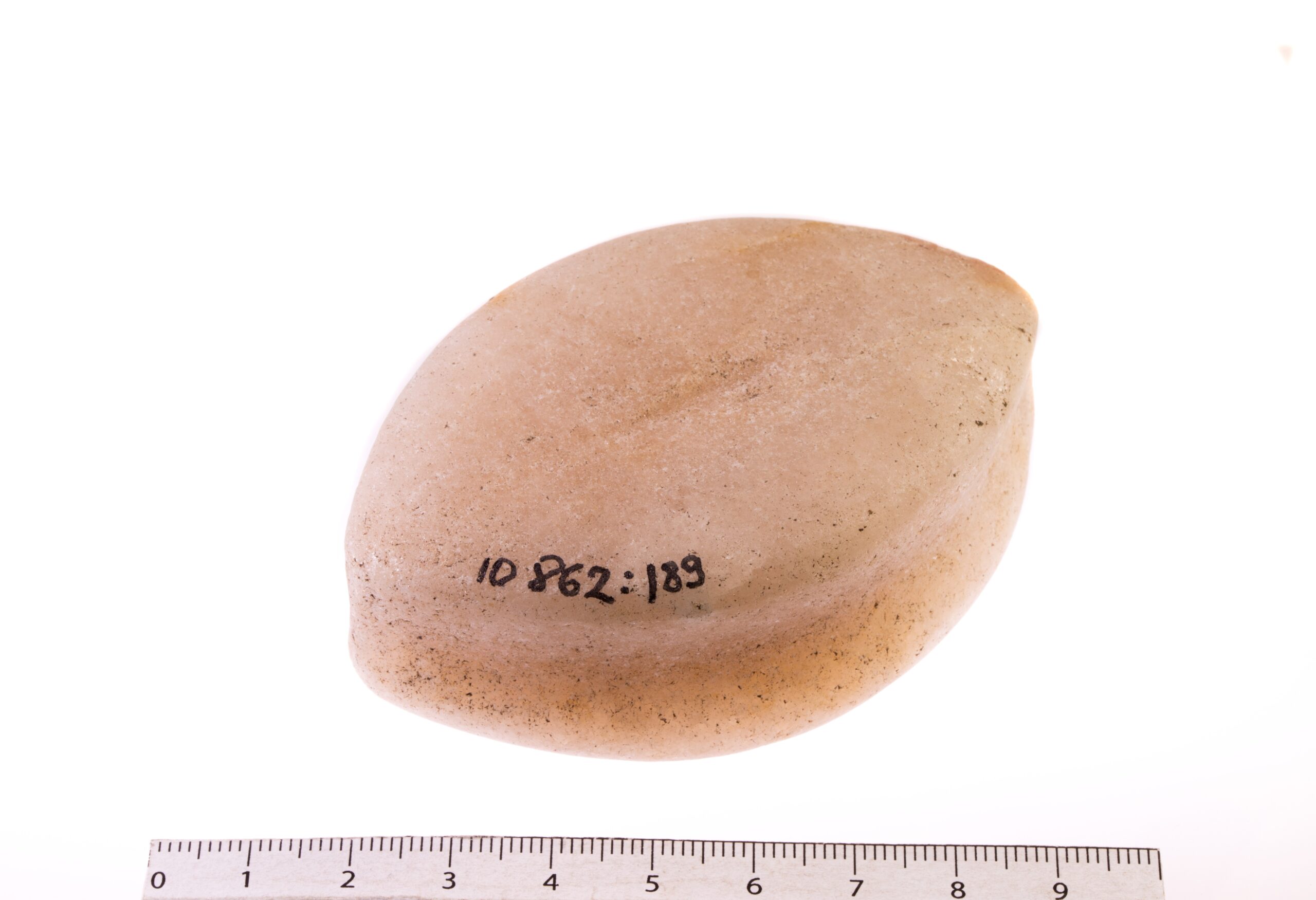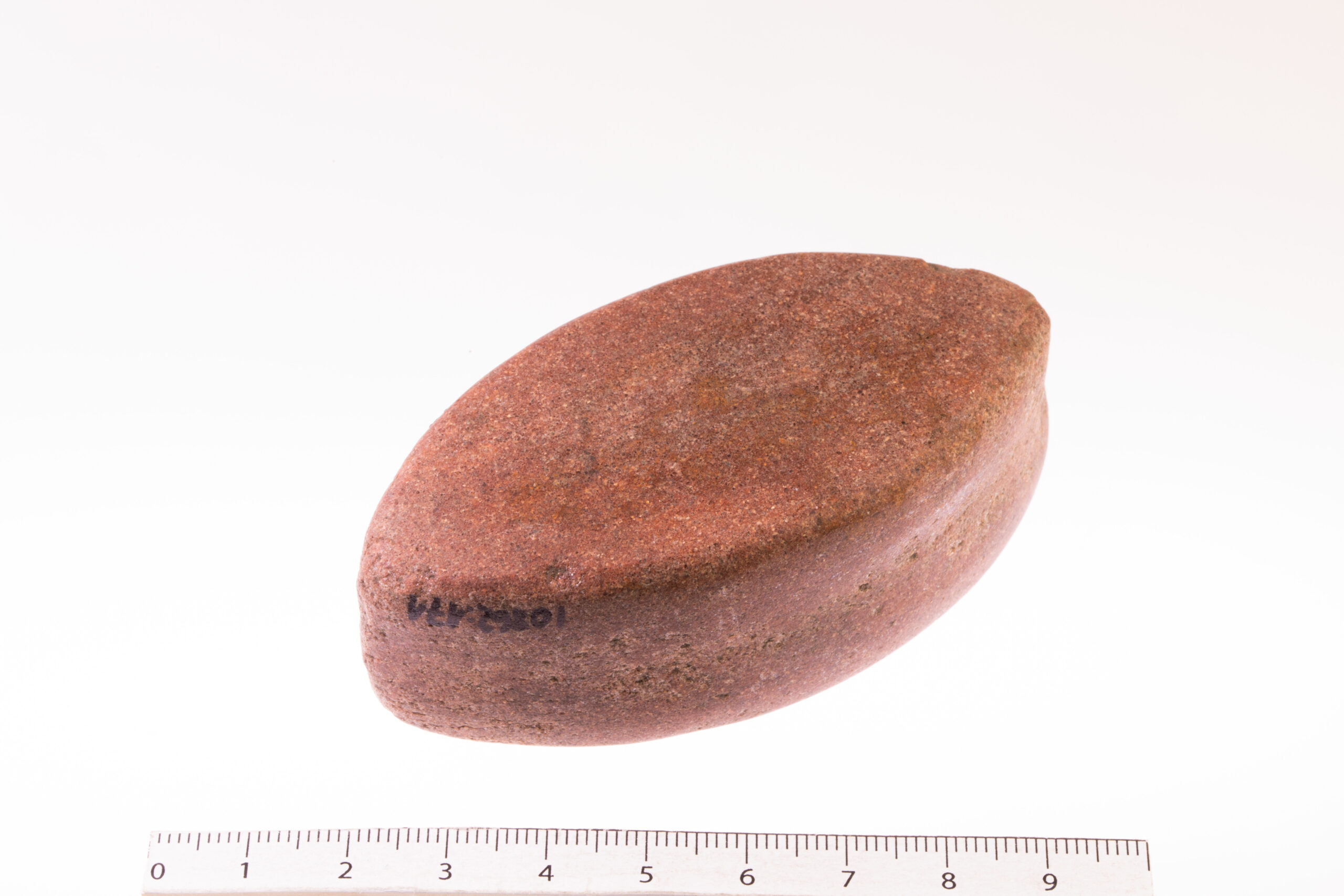Database
Our database is free to use for all history and archaeology enthusiasts. If you use our database, please do not forget to cite correctly:
Mägi, Marika; Palm, Piia Sandra. Archaeological Artefacts of Saaremaa. Foundation Osiliana / Tallinn University. Accessed: date.
The Osiliana Archaeological Database presents artefacts from Saaremaa and the surrounding small islands.
The database contains mainly Iron Age and Medieval finds that can be classified.
Undated metal or other pieces were generally excluded from the database.
Ceramics are represented by isolated examples.
The database is a work in progress and is constantly being updated.
Ure
Arc of a crossbow brooch, silver + gold + iron. The backward-shaped feet form the needle store which was wrapped at the end as wire for six rounds around the middle part of the arc. The head knob of the arc has a circular cross-section and in the hole of it a residue of an iron spiral axis. The brooch is ornamented in four places with two silver ring garnets which have a gold plate in-between. The gold plates have had embossed ornament. On the gold plate at the bottom of the foot, a small head of a bird and two diagonal stripes can be distinguished. The next one after this has diagonal embossed stripes and two birds. Another after that depicts the bird as well, flanked by a central ring and surrounding ovals of a flower. The uppermost plaque shows the image of a bird with a band of diagonal stripes below it. This is a typical Estonian brooch type, the only exception being the embossed ornamentation on the gold plaques as usually a reticulated pattern is used.

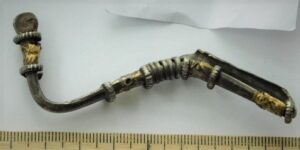
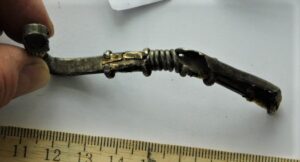

Arc of a crossbow brooch, silver + gold + iron. The backward-shaped feet form the needle store which was wrapped at the end as wire for six rounds around the middle part of the arc. The head knob of the arc has a circular cross-section and in the hole of it a residue of an iron spiral axis. The brooch is ornamented in four places with two silver ring garnets which have a gold plate in-between. The gold plates have had embossed ornament. On the gold plate at the bottom of the foot, a small head of a bird and two diagonal stripes can be distinguished. The next one after this has diagonal embossed stripes and two birds. Another after that depicts the bird as well, flanked by a central ring and surrounding ovals of a flower. The uppermost plaque shows the image of a bird with a band of diagonal stripes below it. This is a typical Estonian brooch type, the only exception being the embossed ornamentation on the gold plaques as usually a reticulated pattern is used. In Lithuanian Courland, such types of brooches were used from as early as the 2nd-3rd century (Tautavićius 1968, 141), but it seems more likely that the Ure specimen belongs to the 4th-5th centuries (Rohtla 2005, 126-127).
Literature:
Rohtla, M.-L. 2005. Crossbow fibula as a reflection of social status and relations. – Culture and Material Culture. – Interarchaeologia, 1. Ed. by V. Lang. Tartu – Riga – Vilnius, 121–145.
Tautavićius, A. (ed.) 1968. Lietuvos archeologiniai paminklai. Lietuvos pajūrio I-VII a. kapinynas. Vilnius.
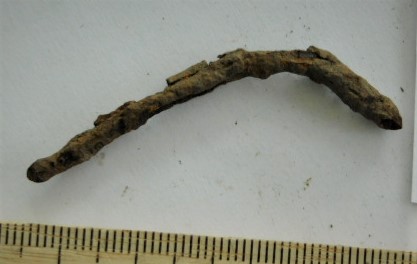
Ure
Arrowhead (?), iron.
Ure
Crossbow brooch, bronze and iron. Only a small part of the spiral axis has been preserved. The arc has a flat cross-section and the needle store has been cast.
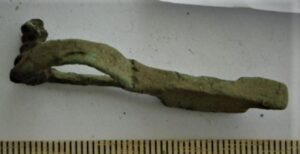
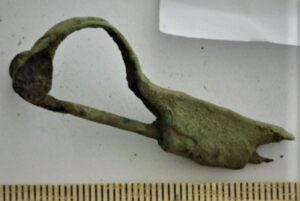

Last picture: Jaana Ratas
Crossbow brooch, bronze and iron. Only a small part of the spiral axis has been preserved. The arc has a flat cross-section and the needle store has been cast. Although brooches with casted foot became common in Estonia already in the 3rd century AD, this particular brooch may be from the period at the end of the 4th century up until the 6th century. (Rohtla 2005, 127 jj).
Literature:
Rohtla, M.-L. 2005. Crossbow fibula as a reflection of social status and relations. – Culture and Material Culture. – Interarchaeologia, 1. Ed. by V. Lang. Tartu – Riga – Vilnius, 121–145.
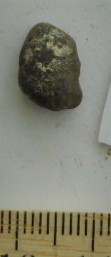
Ure
Melted piece of silver.
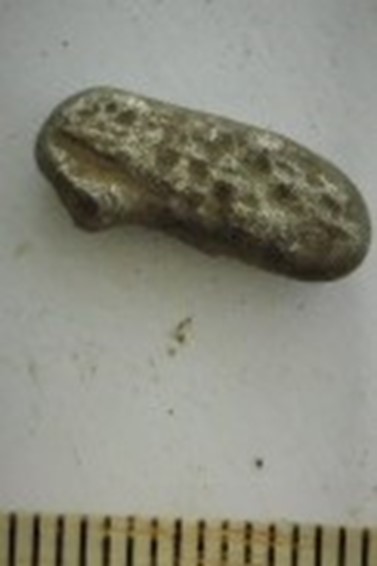
Ure
Melted piece of silver.
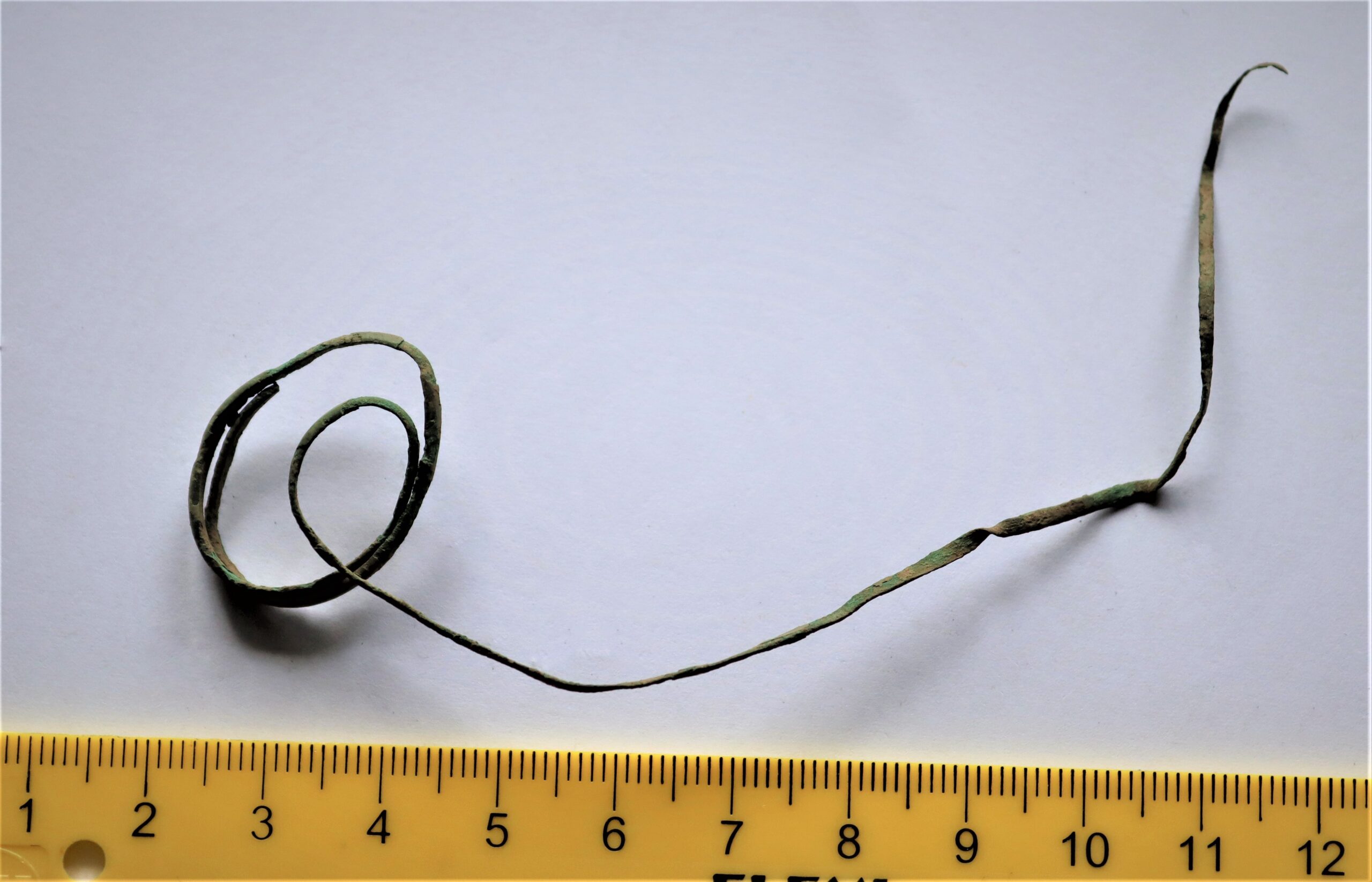
Ure
Spiral, unraveled, bronze
Ure
Fire striking stone, oval shaped, with sharpening ends. Light beige stone. Oval fire striking stones have been found in several mainly Roman Period deposits, burial places as well as stray finds in Estonia and surrounding countries. In Estonian and Finnish archaeology, such stones have normally been considered as rituaal items, in Scandinavia also as items indicating status.

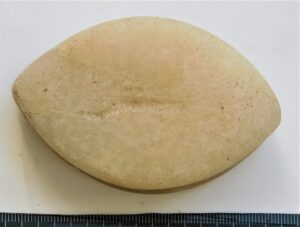
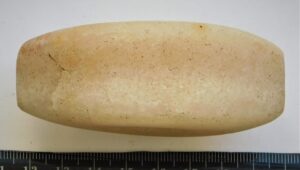
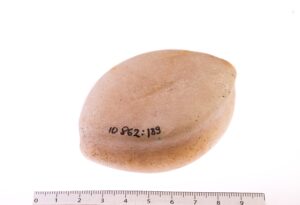
Last photo: Jaana Ratas.
Fire striking stone, oval shaped, with sharpening ends. Light beige stone. Oval fire striking stones have been found in several mainly Roman Period deposits, burial places as well as stray finds in Estonia and surrounding countries. In Estonian and Finnish archaeology, such stones have normally been considered as rituaal items, in Scandinavia also as items indicating status (Oras et al 2018; Monikander 2015).
Literature:
Monikander, A. 2015. Negotiating Fire and Water: Strike-a-lights from the Early Iron Age in Scandinavian Wetlands. – Journal of Wetland Archaeology, 15:1, 57-71. Read the article: here.
Oras, E., Kriiska, A., Kimber, A., Paavel, K. & Juus, T. 2018. Kohtla-Vanaküla weapons and tools deposit: an Iron Age sacrificial site In North-East Estonia. – Estonian Journal of Archaeology 2018, 22, 1, 5–31. https://doi.org/10.3176/arch.2018.1.02.
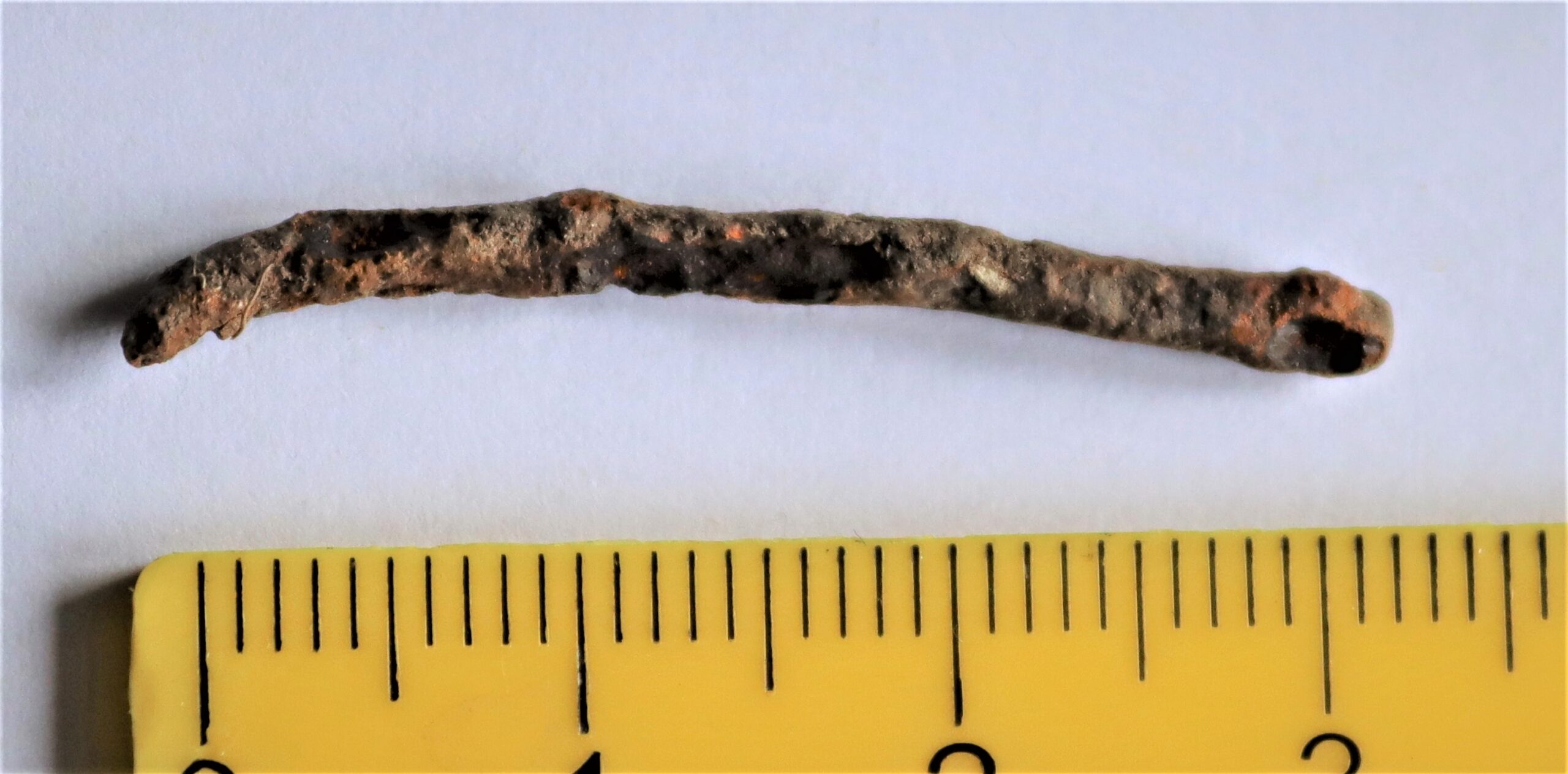
Ure
Iron rod.
Ure
Fire striking stone, oval shaped, with sharpening ends. White-red stone. Oval fire striking stones have been found in several mainly Roman Period deposits, burial places as well as stray finds in Estonia and surrounding countries.
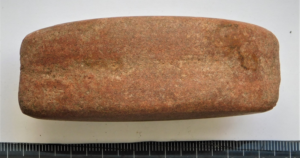

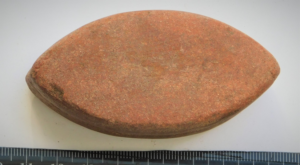
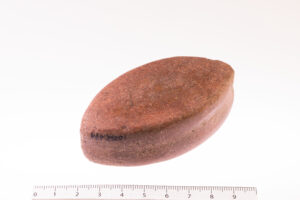
Last photo: Jaana Ratas.
Fire striking stone, oval shaped, with sharpening ends. White-red stone. Oval fire striking stones have been found in several mainly Roman Period deposits, burial places as well as stray finds in Estonia and surrounding countries. In Estonian and Finnish archaeology, such stones have normally been considered as rituaal items, in Scandinavia also as items indicating status (Oras et al 2018; Monikander 2015).
Literature:
Monikander, A. 2015. Negotiating Fire and Water: Strike-a-lights from the Early Iron Age in Scandinavian Wetlands. – Journal of Wetland Archaeology, 15:1, 57-71. Read the article: here.
Oras, E., Kriiska, A., Kimber, A., Paavel, K. & Juus, T. 2018. Kohtla-Vanaküla weapons and tools deposit: an Iron Age sacrificial site In North-East Estonia. – Estonian Journal of Archaeology 2018, 22, 1, 5–31. https://doi.org/10.3176/arch.2018.1.02.
The negative value refers to time Before Christ.

